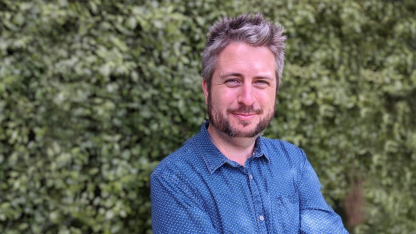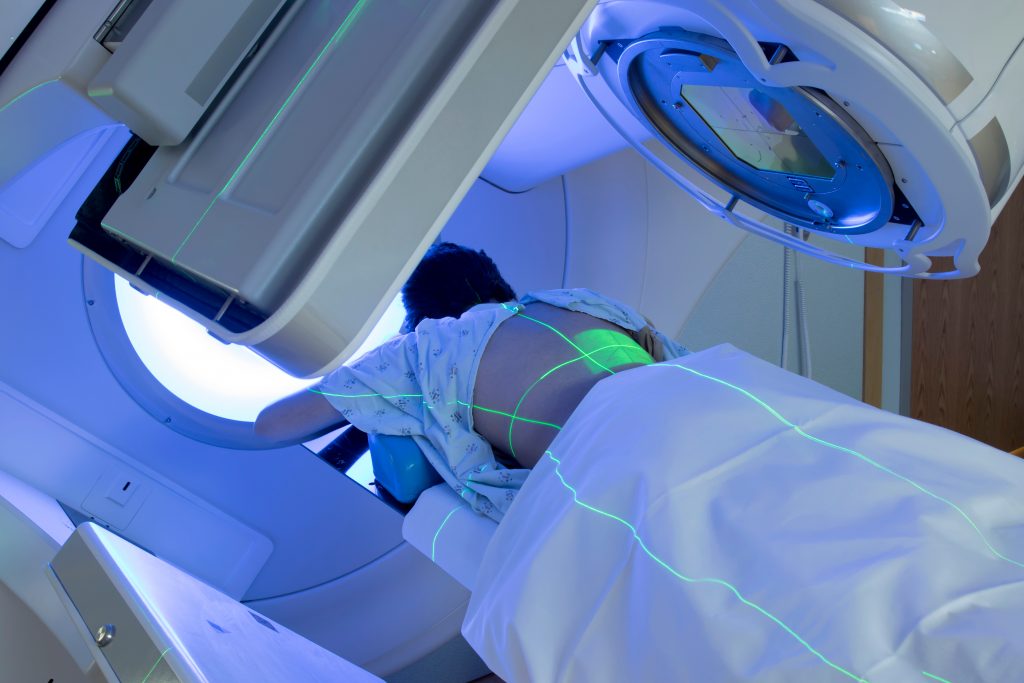Riding the crest of innovation
Open-sourcing software is a powerful way to keep improving it, but how do you turn it into a profitable business at the same time?
Most business people would find Simon Biggs’s start-up business model pretty crazy. Rather than protecting with patents most of his intellectual property, he is providing it free to anyone – competitors, other start-ups, existing medical tech companies – in the hope that it can continually be improved, and more cancer patients worldwide will benefit.
The Radiotherapy AI software Simon has developed helps with one of the biggest variables when using radiotherapy to treat cancer patients. Before treatment, a line is drawn around the targeted area, based on the patient’s scans. But every clinician and doctor will draw that boundary slightly differently, potentially affecting the efficacy of treatment.

A fully trained medical physicist, Simon has a love for maths and an extensive background in coding. Each day in the clinic he wondered why artificial intelligence wasn’t used to consistently draw the best lines for radiotherapy treatment, and knew he had the necessary skills to make it possible. “If used in every clinic around the world, 30,000 patients could be saved every year by having an AI system which allowed for a more precise line to be drawn,” Simon says. “Plus, there’d be a huge saving in time. I hit the beginning of 2021 and I said, ‘Why is no hospital in Australia producing one of these yet?’ I decided I would rather try and fail than not try at all.”
But Simon also knew that in the rapidly developing field of AI, it’s vital to have many minds looking at the software, constantly improving it. “If you look at how AI is developed outside the medical industry, the start-ups that do the best are the ones that have a significant component that’s open-sourced,” he says. “People try it, build on it, and try and break it. Those are the ones that are at the forefront of what’s best. I knew it would be great to pull some of that power of community into my product.”
So, with a hundred complicated potential business models in his head as to how he could generate freely available software while also having a commercial product, Simon attended NSW Health’s free Commercialisation Training Program, part of which included a panel on different business models. “It was amazing to have a group look at your business model and put you through the hole-poking test – trying to find holes you haven’t thought about. Have you thought about this? What about this?”

Dr Sylvia Pfeiffer, founder of telehealth software company Coviu, was on the panel. “I wanted to know, ‘What’s the thing that’s going to destroy my company if I get it wrong?’” Simon says. “So I asked the panel, ‘Is my business model crazy?’ When you apply for grants from government, they usually ask, ‘Do you have effective IP protection?’ You’re essentially throwing away a lot of partnership opportunities to stay on the crest of innovation.”
Dr Pfeiffer ended up spending several days in discussion with Simon and they came up with a plan “to make the business component as simple as possible while still being successful”. There is an open-sourced version of the Radiotherapy AI software, not intended for clinical use, and then a regulated, locked-down version that can’t be changed. “If you want to use that version, then you need to pay for a licence for that,” Simon says. “The stuff we’ll be able to achieve as a community [with the open-sourced version] will be way better than what I can do in my little company, but I can also have the best product in my area.”
Find out more about the NSW Health Commercialisation Training Program.
Updated 2 years ago